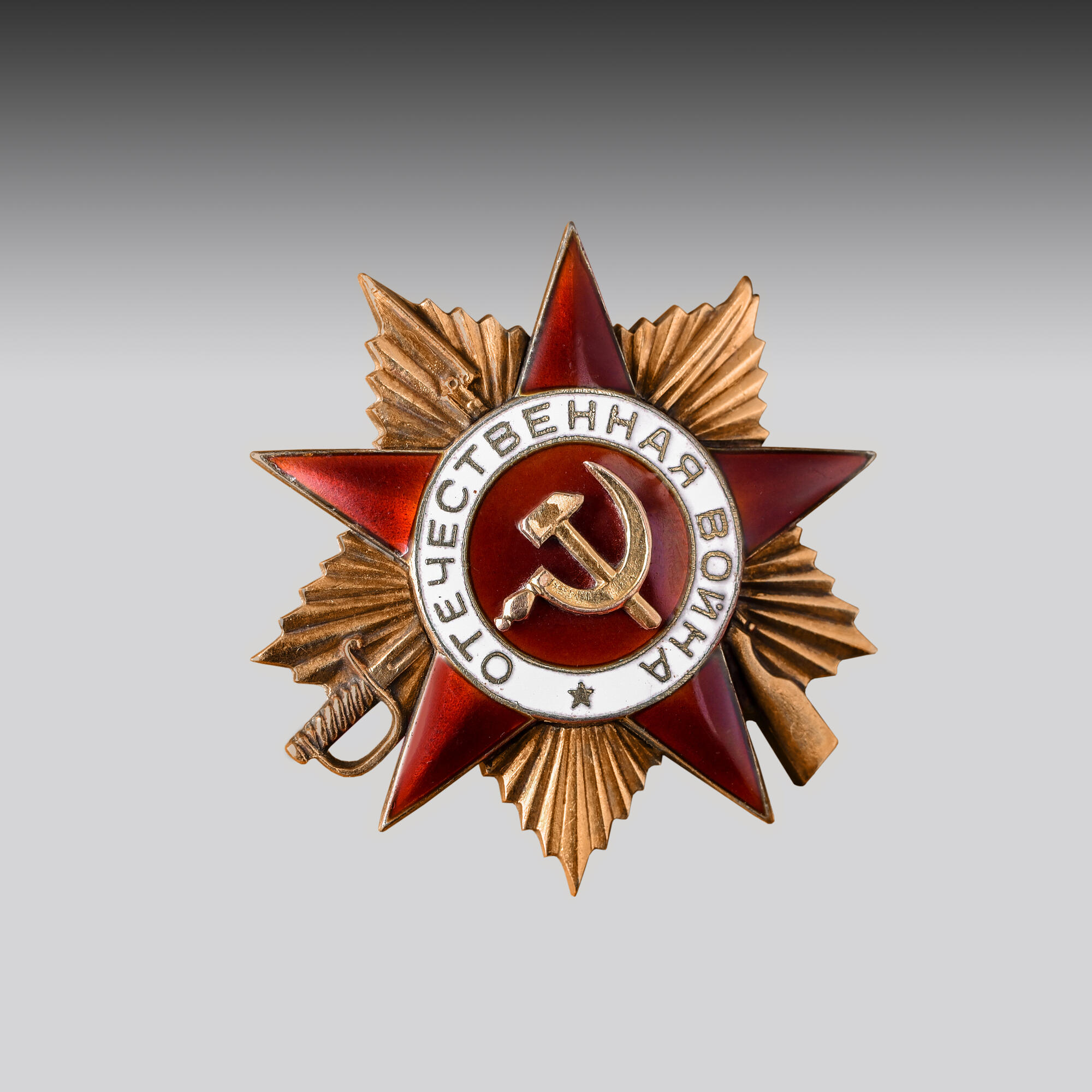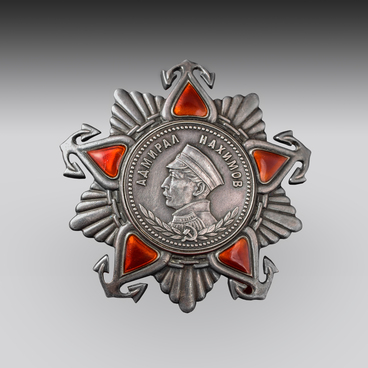The Order of the Patriotic War, the first Soviet award of the war period, was introduced by the Decree of the Supreme Soviet Presidium of the USSR called ‘On the establishment of the Orders of the Patriotic War, 1st and 2nd Class " in May 1942. During the war, 324,903 people were awarded the 1st class of the Order. As of 1985, the total number of all awarded Orders was 344 000.
Stalin instructed Andrei Khrulev, the head of the rear of the Red Army, to present the draft of the order on April 10, 1942. Initially, the award was planned to be called ‘For Military Valor’. Artists Sergey Dmitriev and Alexander Kuznetsov were involved in the work on the project. Two days later, they made the first sketches, some of which were selected for the production of trial copies in metal. On April 18, 1942, the samples were submitted for approval. Kuznetsov’s version was taken as the basis for the future award, and the idea of the inscription “Patriotic War” (“Отечественная война”) was included in Dmitriev’s project.
The Order of the Patriotic War is an image of a convex five-pointed star, covered with ruby-red enamel, against a background of rays that diverge in the form of a five-pointed polished star. In the center, there is a hammer and sickle on a ruby-red round plate bordered by a white enamel belt with the inscription ‘Patriotic War’ and a little star in the lower part of the belt. The ends of a crossed rifle and saber are depicted against the background of the star rays. The butt of the rifle faces down to the right, and the saber hilt faces down to the left.
To timely reward soldiers and commanders who distinguished themselves in combat, the right to award the Order of the Patriotic War was transferred to the military command — from front and fleet commanders to corps commanders. Awarding often took place in a combat situation immediately after the achievement of the feat.
The order on display belonged to the Hero of the Soviet Union, Fyodor Kostin, a resident of the Adyshevo village, Vyatka province (now it is the Kirov region). During the Great Patriotic War, Kostin fought on the Western Front, served as a sniper. He especially distinguished himself in the battles for the liberation of the Baltic States, one of the first to cross the State border of the USSR with Lithuania. On March 24, 1945, Fyodor Kostin was awarded the title Hero of the Soviet Union for the courage and heroism which he showed in battle.
Stalin instructed Andrei Khrulev, the head of the rear of the Red Army, to present the draft of the order on April 10, 1942. Initially, the award was planned to be called ‘For Military Valor’. Artists Sergey Dmitriev and Alexander Kuznetsov were involved in the work on the project. Two days later, they made the first sketches, some of which were selected for the production of trial copies in metal. On April 18, 1942, the samples were submitted for approval. Kuznetsov’s version was taken as the basis for the future award, and the idea of the inscription “Patriotic War” (“Отечественная война”) was included in Dmitriev’s project.
The Order of the Patriotic War is an image of a convex five-pointed star, covered with ruby-red enamel, against a background of rays that diverge in the form of a five-pointed polished star. In the center, there is a hammer and sickle on a ruby-red round plate bordered by a white enamel belt with the inscription ‘Patriotic War’ and a little star in the lower part of the belt. The ends of a crossed rifle and saber are depicted against the background of the star rays. The butt of the rifle faces down to the right, and the saber hilt faces down to the left.
To timely reward soldiers and commanders who distinguished themselves in combat, the right to award the Order of the Patriotic War was transferred to the military command — from front and fleet commanders to corps commanders. Awarding often took place in a combat situation immediately after the achievement of the feat.
The order on display belonged to the Hero of the Soviet Union, Fyodor Kostin, a resident of the Adyshevo village, Vyatka province (now it is the Kirov region). During the Great Patriotic War, Kostin fought on the Western Front, served as a sniper. He especially distinguished himself in the battles for the liberation of the Baltic States, one of the first to cross the State border of the USSR with Lithuania. On March 24, 1945, Fyodor Kostin was awarded the title Hero of the Soviet Union for the courage and heroism which he showed in battle.



